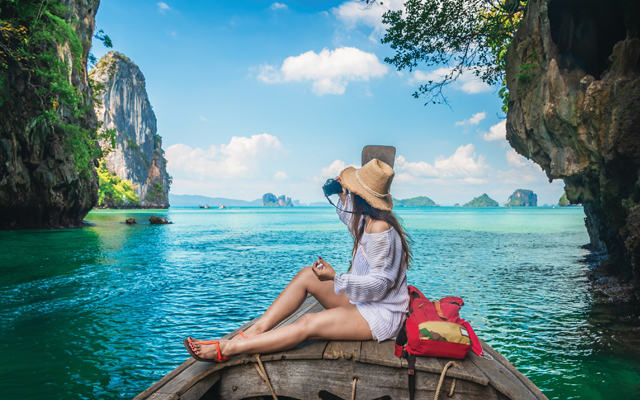Located on southern Thailand’s west coast, Krabi is ramping up its green initiatives to offer travellers fun, yet sustainable, island experiences.
Krabi and Koh Lanta are two of Thailand’s most popular destinations, known for their stunning natural beauty, rich culture, and unique experiences. Krabi is a province located on the south-west coast of Thailand, famous for its limestone cliffs, crystal-clear waters, and pristine beaches. The province is also home to several national parks, not to mention some of the world’s most beautiful beaches. Koh Lanta, on the other hand, is a beautiful island located in the Andaman Sea, just off the coast of Krabi. Less developed than the mainland, the island features stunning beaches, crystal-clear waters, and a laid-back atmosphere.
Like all tourist destinations in Thailand, 2023 has been a vital year for Krabi and Koh Lanta. The ongoing crusade to rebuild post-lockdown continues while environmental issues have forced the province to bring sustainable tourism and eco-conscious policies to the fore of any plans in the region.

Earlier this year, the Thai government announced plans to make the region carbon neutral and signed a Memorandum of Understanding (MoU) with more than 20 stakeholders and state agencies to spearhead a drive to reduce pollution and become the first Thai province to reach net zero carbon emissions by 2040.
The Ministry of Higher Education, Science, Research and Innovation is collaborating with the group, a mix of local agencies and tour operators, to evaluate the potential of blue carbon (carbon stored in coastal and marine habitats) storage in mangrove forests and natural seagrass. The project is also planning restoration projects in the southern part of the Andaman Sea and organising campaigns to raise awareness about coastal ecology and restoration practices in local communities.
Advising the 22 signatories of the MoU is associate professor Siwarit Pongsakornrungsilp, acting dean of Nakhon Si Thammarat’s Walailak University, who explained that the tourism industry is responsible – approximately eight per cent of Thailand’s total emissions of greenhouse gases can be attributed to transport, manufacturing, and hotel and restaurant operations.
The annual closure of Maya Bay, a popular destination in South-east Asia made famous by the Leonardo DiCaprio starring blockbuster, The Beach, is another sustainable tourism scheme that has been successful in the region.
In 2018, the island was closed for three and a half years to allow the island’s coral reef and natural habitat to recover from the damage inflicted by thousands of tourists who visited everyday. Since re-opening last year, visitors to Maya Bay are restricted to 4,000 each day, and swimming has been banned to protect the area’s delicate eco-system.

Crucially, the island now operates an annual closure of three months during the rainy season to encourage conservation and re-growth.
Another component of Krabi’s post-lockdown recovery is the upgrade of Krabi International Airport. The three billion baht (US$84 million) transformation will allow the airport to handle more passengers, refurbishing the two existing terminals, and constructing a third, and expanding parking facilities.
The new terminals will double the airport’s passenger-handling capacity from the current cap of 1,500 passengers per hour or four million annually to 3,000 passengers per hour or eight million annually. The project will complete by 2024, and fully operational in 2025.
There are plenty of properties in Krabi and Koh Lanta to service the enhanced passenger capacity, notably the Varana Hotel, which opened in April 2023. The five-star wellness-themed property features 141 luxury rooms and four swimming pools – including Krabi’s first Olympic-sized pool and the NAAM Wellness Pool, the location of the hotel’s 10-step DIY aqua therapy programme.
Over on Koh Lanta, Pimalai Resort & Spa has spent 50 million baht on updating its product, with 30 million worth of upgrades on its beachside villas and 20 million on installing an improved bar lounge bar.
The hotel has also begun a number of sustainable tours, including the Mangroves Tour and the Talabeng + Koh Lanta Old Town tour uncovers the dramatic limestone karsts and cliffs of Koh Talabeng island, before heading to Koh Lanta’s Old Town, a quaint port with more than 100 years of heritage.
The hotel participates in several community projects, such as a drive to release 50 endangered turtles and millions of crabs into the Andaman Sea, as part of its commitment to conserving the marine environment.




















